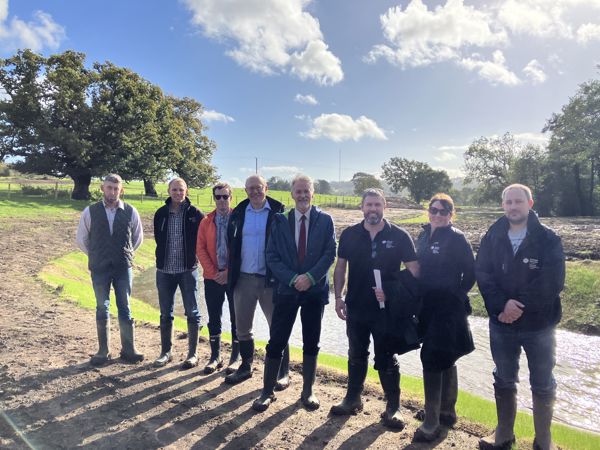Major river restoration project completed to boost biodiversity in the Vale of Glamorgan

Approximately 750m of habitat for wildlife such as salmon, eels and otter has been improved on the Nant Dowlais in the Vale of Glamorgan, as part of a major project by Natural Resources Wales (NRW).
The project aims to restore natural river processes along the Nant Dowlais, a tributary of the River Ely near St Fagans, which has historically been modified and straightened.
These historic changes have caused erosion, which has washed away natural gravels and led to heavy sedimentation in the channel. These gravel beds are essential to support fish populations as they travel upstream to lay eggs in the gravels.
In July, contractors McCarthy Contractors (Bridgend) Ltd began work to reinstate the natural path of the river, reintroducing meanders which have been lost and adding approximately 200m in channel length.
This will help with sediment movement within the channel while also encouraging new gravel beds to form. The restored channel will also improve the connection between the river and its natural floodplain.
New fencing and a drinking bay has been installed to create buffer zones between the river and grazing livestock, encouraging riverside vegetation and wildflowers to flourish, supporting biodiversity and nature corridors.
Rhodri Powell, Specialist Advisor from NRW’s River Restoration Programme said:
“This project is one of our largest river restoration interventions to date which will significantly improve the Nant Dowlais.
“Historically, rivers have been modified for human benefit with little thought about the consequences on nature. In many cases such as here, this has completely deteriorated the condition of the river and the habitat that is needed to support healthy fish populations.
“We aim to reverse the damage that has been done by restoring rivers to a more natural state, so they can once again support a wide range of plants and wildlife.”
David Letellier, Head of south Wales central Operations said:
“The scale and rate of biodiversity loss across the nation is accelerating, and we must take urgent action to secure the future of some of our most iconic and threatened species.
“This ambitious project aims to bring life back into the Nant Dowlais, while also improving water quality and building resilience to the impacts of climate change in the future. This is part of a wider Ely Catchment vision to restore ecological resilience throughout the landscape.
“This is a great example of how we are working towards our corporate plan ambitions to become nature positive by 2030.”
Deputy First Minister with responsibility for Climate Change, Huw Irranca-Davies said:
"I am delighted when we can fund projects like this which make a real difference to our rivers and people’s lives.
"We are fully committed to improving water quality and restoring our rivers. I’m hopeful that the lessons we learn from this work on the Nant Dowlais can help inform more projects like this right across Wales."
The project has been delivered through successful collaboration with the landowners adjoining the Nant Dowlais, the Plymoth Estate and the Traherne Estate. Both have supported the project and facilitated the changes to the river corridor and floodplain, with the help of their tenant farmers.
Currently the Nant Dowlais is failing to meet ‘good’ overall status under the Water Framework Directive (England and Wales) Regulations 2017 due to pressures associated with fish and water quality (phosphate).
The project has been delivered by NRW’s ambitious River Restoration Programme. This seeks to restore rivers which have been modified and to reintroduce natural habitats which has been lost due to historic human activity.
It has been funded by the Welsh Government’s Water Capital Programme, which supports a number of environmental priorities including river restoration, metal mine remediation, fisheries and water quality.
